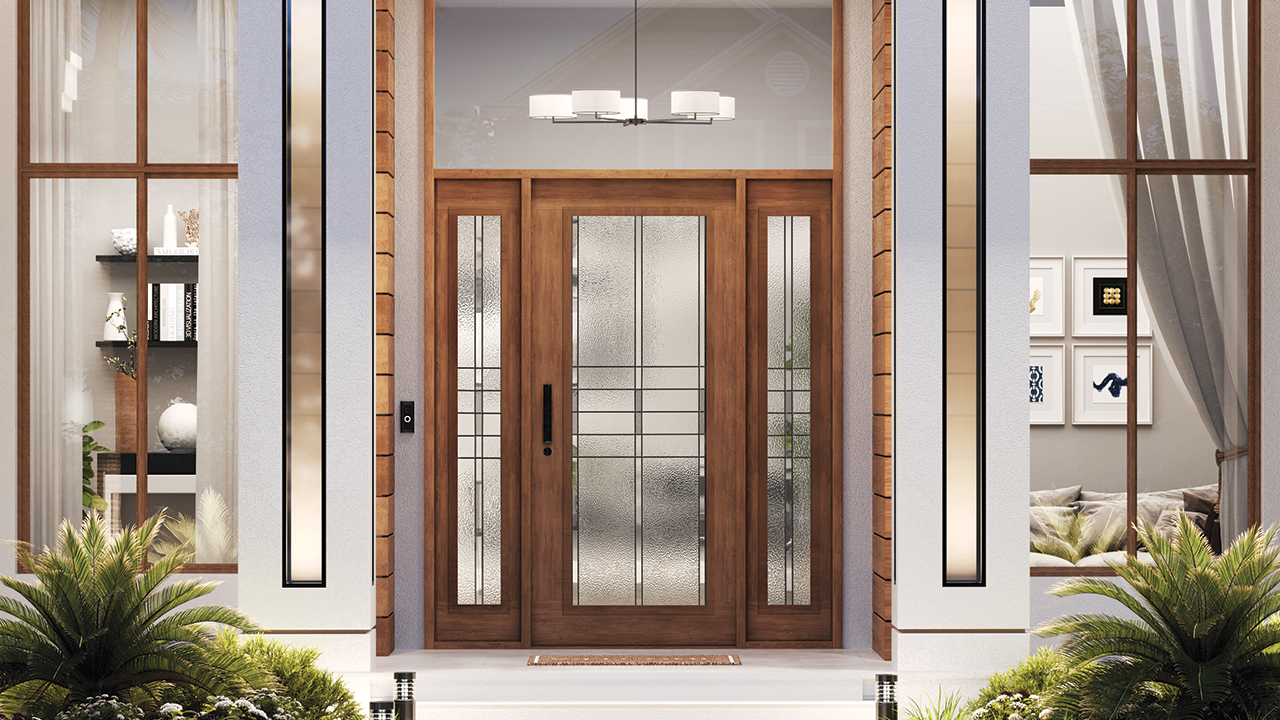When designing or renovating a space, we often pour our energy into selecting the perfect door—its style, color, and panel design. However, the door frame, the unsung hero of the doorway, is frequently an afterthought. This is a critical mistake. The door frame is not just a structural necessity; it is the foundation that ensures your door functions correctly, enhances your home’s aesthetic, and provides security and insulation. Choosing the right door frame involves considering material, size, style, and function. This guide will walk you through the essential factors to make an informed decision.
- Understanding the Core Function: More Than Just a Border
First, it’s crucial to understand what a door frame does. It is the permanent structure to which the door is hinged or slid into. Its primary functions are:
Structural Support: It bears the weight of the door and ensures smooth operation (opening, closing, and latching).
Security: A robust frame anchors the lock strike plate, making forced entry significantly more difficult.
Aesthetic Finish: It provides a clean, finished transition between the door and the wall, contributing to the room’s overall look.
Insulation: Along with weatherstripping, it seals the doorway, preventing drafts, noise, and moisture from passing through.
- Material Matters: The Foundation of Durability and Style
The material of your door frame is the most significant determinant of its durability, maintenance needs, and appearance.
Wood: The classic and most versatile choice.
Pros: Offers a timeless, warm aesthetic that suits both traditional and modern homes. It can be easily painted or stained to match any décor. Wood is also a natural insulator.
Cons: Susceptible to warping, cracking, or rotting in environments with high humidity or significant temperature fluctuations. Requires more maintenance than other materials.
Best for: Interior doors, exterior doors in climates with stable weather, and homeowners seeking a custom, high-end look.
MDF (Medium-Density Fiberboard): An engineered wood product.
Pros: Extremely affordable, smooth, and free of natural imperfections like knots. It doesn’t warp or crack like natural wood and is perfect for a painted finish.
Cons: Not as strong as solid wood. It is vulnerable to moisture and can swell if water damaged. Not suitable for high-impact areas or exterior use.
Best for: Low-traffic interior doors and budget-conscious projects where a painted finish is desired.
Steel: The champion of security and strength.
Pros: Incredibly strong, durable, and resistant to warping, cracking, and fire. Offers superior security for exterior doors. Low maintenance, typically requiring only paint.
Cons: Can dent upon impact. Poor insulator, potentially leading to condensation and heat transfer. The industrial look may not suit all home styles.
Best for: exterior doors where security is the top priority, such as front and back doors.
Aluminum/Composite: Modern and resilient.
Pros: Lightweight, rust-resistant, and requires minimal upkeep. Modern aluminum frames often have thermal breaks to improve insulation. Composite materials can mimic the look of wood with greater durability.
Cons: Can be more expensive. May not offer the same classic warmth as wood.
Best for: Modern homes, patio doors, and humid coastal climates.
- Size and Dimensions: The Importance of Precision
A beautiful, expensive door is useless if the frame isn’t the right size. The golden rule here is to measure the rough opening—the unfinished door opening in the wall—not the existing door or frame.
Width and Height: Standard sizes exist, but older homes often have custom openings. Always measure twice. The rough opening should be slightly larger than the door itself to allow for shims and adjustments during installation.
Jamb Width: This is the depth of the frame and is critical. It must match the thickness of your wall. A standard interior wall is typically 4-⅞” thick, while exterior walls can be 6-⅞” or more due to insulation and siding. A frame that is too narrow will not reach the wall surface, while one that is too wide will protrude and require extensive trimming.
- Style and Aesthetics: Blending Form with Function
The door frame profile contributes significantly to your home’s character.
Casing: This is the decorative molding that trims the perimeter of the frame, covering the gap between the frame and the wall. Choose a casing style that complements your home’s architecture—simple, clean lines for a modern look, and ornate, curved profiles for a traditional feel.
Architraves: In more elaborate designs, the casing can be a complex assembly known as an architrave, which can include multiple layers of molding for a grand, elegant effect.
Pre-hung vs. Slab Doors: Your choice here dictates the frame. A pre-hung door comes already attached to its frame, making installation easier and ensuring a perfect fit. A slab door is just the door itself, requiring you to retrofit it into an existing frame, which is a job for experienced DIYers or carpenters.
- Considerations for Function and Location
Interior vs. Exterior: Exterior frames must be built from weather-resistant materials (wood, steel, aluminum/composite) and include a sill or threshold and provisions for weatherstripping. Interior frames prioritize aesthetics and ease of movement.
Room Function: Consider moisture resistance for bathrooms and laundries. An MDF frame might not be the best choice here, while moisture-resistant primed wood or PVC options could be better.
- Installation: DIY or Professional?
Installing a door frame requires precision. A poorly installed frame will lead to a door that sticks, doesn’t latch, or drafts air. While replacing a door within an existing frame can be a DIY project, installing a new pre-hung door or building a frame from scratch is complex. For a guaranteed level, plumb, and secure result, hiring a professional is often a wise investment.
Conclusion: An Investment in Quality
The door frame is a critical component that should be chosen with care. By carefully evaluating the material, ensuring precise measurements, selecting a complementary style, and considering the door’s function, you can ensure a beautiful, functional, and long-lasting entryway. Don’t let the frame be an afterthought—view it as the essential foundation for your door, an investment that enhances your home’s comfort, security, and beauty for years to come.
